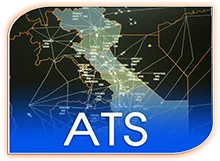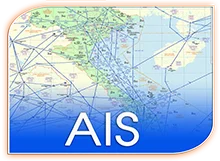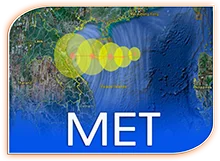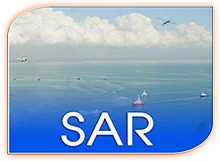The current VCCS TDM system and VCS IP for the future (period 1)
VCCS systems have the function of integrating all the necessary communication channels on a compact and handy switching system. Digital communication systems utilize a central switching matrix designed in accordance with the distribution principle for routing calls between source and destination based on digital signal switching platform as the process. Connect, exchange digital information in time slots divided by TDM time division method. The corporation is currently using a variety of different VCCS brands such as Drake at ACC HAN, GAREX at TWR NBA, Darke Gemni 4000 Series II in Central and VCS3020X at AACC HCM, Liberty-STAR at TWR TSN.
The role of VCCS in the flight management chain
- Connect to communication channels including VHF voice, local voice, hotline via the communication card system.
- Encode and process audio signals, routes and switches that audio signal through the central switching system.
- Provide user terminal locations: At each location, on the TED screen, the user can operate: Receiver selection, main / secondary selection for a VHF voice channel, enable Establish or cancel a domestic or international hotline or voice channel, which enables communication with other locations on the same system via Intercom. In addition, the user can perform other exten- sions such as increasing or decreasing the volume, bringing the tone to the speaker or headset, calibrating the screen, redirecting the call, Close to other locations ...
- In addition, the VCCS system allows monitoring, management and configuration via system monitoring software installed on the computer.
VCS-IP voice switching system
Features of VCS-IP voice switching system:
- Use IP technology from operator to radio station.
- There are many converters to support the transition from TDM to VoIP
- Distributed network architecture for high responsiveness as well as the design of systems that meet the requirements of the user.
- Support for adding services beyond voice services such as video and messaging.
Operating principle
The traditional voice-based switching solution is based on a TDM voice switch, located at a specific location, while the operating principle of the VCS-IP system is towards a modern distributed network. Accordingly, the voice switching feature is integrated into each device of the VCS-IP system. In order to have a distributed architecture, each device of the network will have the address and telephone number of the entire network and therefore the system can make normal calls without a voice switch. Traditional TDM has been.
VCS-IP is a professional system designed for network management, operation and management including:
- Voice over Radio communication between flight operators and pilots.
- Telephony information with external telephone network with a wide range of interfaces such as FXO, FXS, LB, E & M, ISDN BRI, E1, MFC-R2 ...).
- Internal voice information for users in the unit.
- Ability to record at each operating position, phone and radio interface (IP, analog / digital).
- Link to other air traffic control systems.
Each CWP position allows the operator to make ground communications (to pilots) and land (intercommunication positions or other ground communications systems). With non-radio communication system allows to transmit and receive on one or several radios at the same time, land-based contact allows operator to access directly on the touch screen to call any Any address in and out. Telephone communications as well as radio are the traditional services of flying operations. Also other services like video are also supported at each CWP.
For administrative tasks, operating the entire configuration of the CWPs, switchgear as well as other devices of the VCS-IP system are stored in the VCMS Server (DB5400). System administrators can access the operating and monitoring applications (VCMS) through a computer with a browser using a username and password. Application management and monitoring system VCMS allows to create new profiles add user, device as well as active management, change current configuration, add / remove device.
Short recording feature: Available in each CWP for both air and ground communications. For analog traditional recorders connected to the system via the CWP recording interface. In addition, it is also possible to use VoIP recorders in accordance with the ED137B standard for professional recording.
Maintenance Mode: The VCS-IP system includes BIT (Built In Test) self-test capabilities for converters, CWPs, VCMS Servers, Radio Servers, Time Servers, VoIP Telephony Servers and Other components of the system. This allows for rapid detection and response to problems with the system. VCMS Server will save the error occurred with each device in the system and can be retrieved for analysis.














